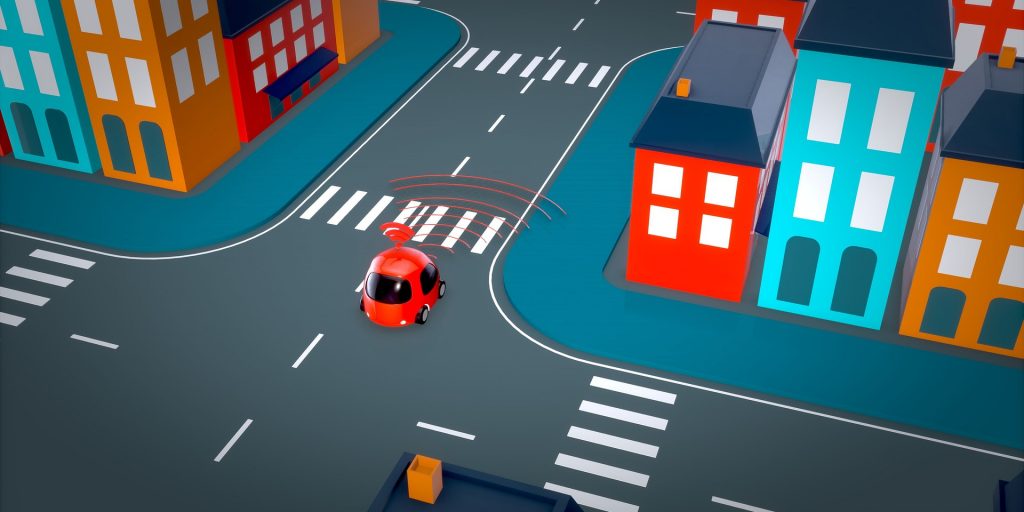With pedestrian fatalities increasing at an alarming rate, could technology be an answer?
Pedestrian fatalities have been on the rise for the last decade, with a sharp spike over the last few years coming as an unfortunate byproduct of the pandemic. The climbing rate shows no signs of slowing down.
The latest analysis of U.S. pedestrian deaths from the Governers Highway Safety Association (GHSA) shows a spike in the early half of last year: “U.S. drivers struck and killed 3,441 pedestrians in the first six months of 2021, up 17 percent—or 507 additional lives lost—from the same period the year before,” a statement about the findings says.
There are a number of reasons driving the surge in pedestrian fatalities, which “began at the start of the pandemic and has not abated,” the statement continues, noting larger vehicles, roads designed to prioritize fast-moving traffic and inadequate infrastructure including sidewalks and lighting.
“Walking is the most basic form of transportation, but there is a pedestrian safety crisis due to drivers speeding, being impaired or distracted, or engaging in other dangerous behaviors,” said Jonathan Adkins, executive director of the highway safety organization. “We need to leverage everything that works—infrastructure improvements, changes to road design, equitable enforcement of traffic safety laws and community outreach—to reverse this deadly trend and make our roadways safe for people walking, biking and rolling.”
And it’s not just pedestrian fatalities that are up. The National Highway Safety Administration reported that more than 31,000 people died in car accidents over the first three quarters of last year, representing “the highest number of fatalities during the first nine months of any years since 2006,” according to the statement.
Across the United States, city and county administrators, along with those at the state level, are working to reverse the trend in a variety of ways—among them through the use of emerging technologies. Speaking at NVIDIA’s GTC 2022 developers’ conference last month, for example, a panel of city managers discussing smart city solutions covered the use of smart sensors and self-driving vehicles to reduce roadway fatalities.
“Every piece of infrastructure will increasingly leverage automation to enhance safety and efficiency,” said Brandy Stanley, parking services manager of Las Vegas, Nev., while introducing the panelists, Guy Elad, chief innovation officer and director of operations at Tel Aviv Municipality, Ken Smith, parking and mobility director at the City of Omaha, Michael Sherwood, Las Vegas’ chief innovation officer and Asfand Siddiqui, senior transportation engineer at the California Department of Transportation.
The session, titled “The Making of Smart Cities,” covered many different aspects of technological adaptation by cities but centered around transportation and curb-side safety.
In California, Siddiqui said his agency is responsible for managing 51,000 line miles of highway for a population of almost 40 million people, among them 24 million drivers.
The roadways are infamously congested, and there are a “Lot of fatalities—the task is daunting,” he said. “You cannot pack more cars on the road today (if) they’re driven by humans. The only way to pack more vehicles on the road is automation.”
“The vehicle has to be connected to the road,” he said, noting there are technologies available that allow cars and smart roadways to communicate. “Your vehicle is connected to anyone who is out there—California transportation, cities, counties, other vehicles, bicycles—you name it.”
From a safety standpoint, Siddiqui said automated vehicles have the potential to be safer because they’re able to “travel at a faster speed at a lot less headway.”
As an example of what a smart transportation network would look like, Siddiqui described an intersection that “knows, at any given moment, how many cars are coming and how many are leaving”—it could adjust its traffic light patterns accordingly to meet demand.
But while automation might be an answer, the technology hasn’t yet advanced to a point of industry proliferation. Meanwhile, Smith said it’s important for cities to begin considering future technological innovations “to at least start with a good foundation. There’s going to be a transition point to where vehicles are good enough,” he said, noting “It’s a collaborative between auto makers and public entities.”
Another challenge, according to Sherwood, is figuring out “How are all of these going to interact together and work together?” As of yet, Sherwood noted there isn’t a cohesive lack of standards for internet-of-things technology. Addressing things from a policy side might be another good step.
Meanwhile, while the industry is still in its infancy, “we’re just running out there and installing and hoping something sticks,” he said.




















